Corals - endangered builders of the ocean
They are a symbol of the beauty and diversity of the underwater world: coral reefs. The brightly colored warm-water corals in tropical waters in particular attract diving fans and researchers alike. But even in deeper, colder and darker regions of the oceans, so-called cold-water corals form huge and no less beautiful reefs. They are all home to a variety of different animal species and form fascinating ecosystems.
At the same time, the sensitive reef constructions and their master builders, the corals, exemplify the threat to the oceans. Rising water temperatures, polluted seas, intensive use of coastal waters and fishing are putting them under pressure. In addition, the world's oceans store large amounts of carbon dioxide. In this way, they slow down global warming to some extent. However, the additional carbon dioxide causes a chain of reactions in the water that make the oceans more acidic. This makes it more difficult for corals to form their calcareous skeletons.
Marine researchers in Kiel have been studying various aspects of coral reefs for many years, from fundamental questions of coral physiology and their ability to react to environmental changes to ways of reading past climate and environmental conditions from the corals.
What makes tropical corals resilient?
Corals are valuable ecosystems and natural coastal protection systems. But their future is uncertain. Among other things, they are threatened by rising water temperatures, which repeatedly cause extensive coral bleaching. One of these events in 2010, for example, damaged half of all coral reefs in Thailand. Dr. Marlene Wall and Dr. Anna Roik from GEOMAR's Marine Ecology research department are investigating how tropical corals react to such events and whether they can regenerate and adapt. "Around the Andaman archipelago in the Indian Ocean, we found that corals that are regularly flooded by cold water from the deep are more resilient than those that live in constant water temperatures," explains Dr. Wall.
In parallel, Anna Roik, marine biologist at GEOMAR until 2021, pursued another approach: What role does the microbiome, i.e. the entirety of the microorganisms living on and on the corals, play in the resilience and fitness of the corals? "By sampling the corals off Thailand and with the help of DNA analyses, we want to learn more about the microbial communities of the corals," reports Roik, "Ultimately, knowledge about the microbiome could lead us to develop novel strategies that enable coral populations to be protected or even made fitter for the future."
Corals tell environmental history
How did the temperature and acidity of the seawater develop, how did the sea level fluctuate? What were the consequences? Corals help to answer many questions about climate and environmental history. Their advantage: they offer a very fine temporal resolution that can hardly be achieved with other climate archives, such as sediment cores. Corals often reach an age of several hundred years. Similar to trees, their annual growth is documented in density bands and thus enables the investigation of geochemical parameters in annual, sometimes seasonal resolution, dating back to times before the industrial development of the 19th century. Even individual natural events such as hurricanes or extreme precipitation can be read from the coral archive.
Cold-water corals - jewels of the depths
Parallel to the studies on tropical corals, researchers in Kiel also began to take an interest in cold-water corals in the mid-1990s. As the reefs exist at much greater depths, for a long time they were only known to fishermen who occasionally had torn coral sticks in their nets. So it was a matter of discovery: where do cold-water coral reefs actually occur? Today, reefs are known from the coast of Mauritania along the European shelf edge to northern Norway, but also in the Gulf of Mexico. Some of them form enormous structures on the shelf edges. In the Porcupine Seabight, a submarine bay west of Ireland, carbonate mounds formed by cold-water corals reach a diameter of 100 to 1,800 meters at their base and a height of up to 350 meters above the sea floor. The Røst Reef off Norway even covers an area of 130 square kilometers.
For a long time, it was completely unclear why cold-water corals only grow in certain places and at certain depths. We now know that they settle in a special dense layer of water that provides them with sufficient nutrients. Over millions of years, the ups and downs of this comfort zone determined whether the corals could grow or not. As water temperatures play a role in density, a warming of the seawater could have a significant impact on coral growth in the future.
Can cold-water corals manage the adaptation?
Janina Büscher, marine biologist at GEOMAR until 2020 in the BIOACID science portrait about her research on cold-water corals
Although cold-water corals are not affected by coral bleaching, their environment is also changing. In the "Biological Oceanography" research unit at GEOMAR, Janina Büscher worked on cold-water corals. The focus was on the species Lophelia pertusa (Desmophyllum pertusum), which is distributed worldwide and can form huge reefs. Janina Büscher brought corals to Kiel several times, where a small cold-water coral habitat was created for this purpose. Experiments were carried out to test how the corals react to rising temperatures and a higher carbon dioxide content. To do this, the temperature and carbon dioxide content were increased in small steps under laboratory conditions for a year. The corals coped reasonably well up to a water temperature of around 15 degrees. A remarkable achievement - they normally live on the Norwegian continental shelf at a water temperature of around 6 to 8 degrees.
In addition, Janina Büscher regularly examined corals in their natural environment. There she checked the condition of the corals, measured their oxygen consumption and compared various parameters with the findings from the laboratory in Kiel. Some corals were also brought back to GEOMAR. "Overall, our results so far indicate that the cold-water corals could cope better with climate change than expected," summarizes Büscher. However, this only applies to living corals. The lower layers of the reefs naturally consist of the skeletons of dead corals. These can no longer adapt and their calcareous skeleton dissolves with increasing acidification. In the worst case scenario, the entire reef could collapse. And the living corals also need a lot of energy to adapt, which may then be lacking for other tasks such as reproduction. The all-clear is therefore not in sight for cold-water corals either.


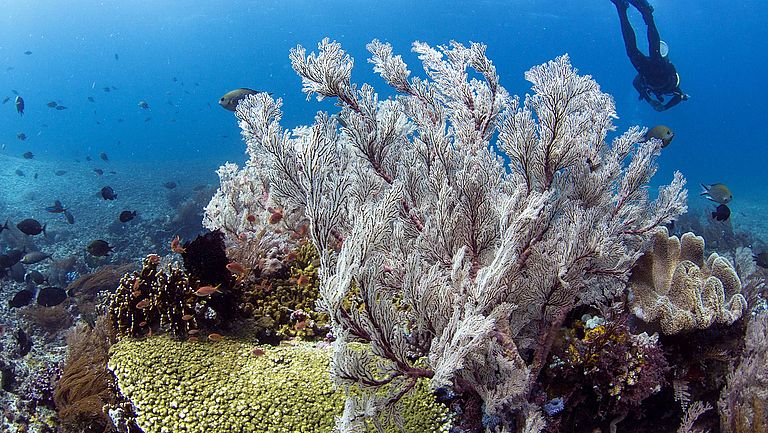
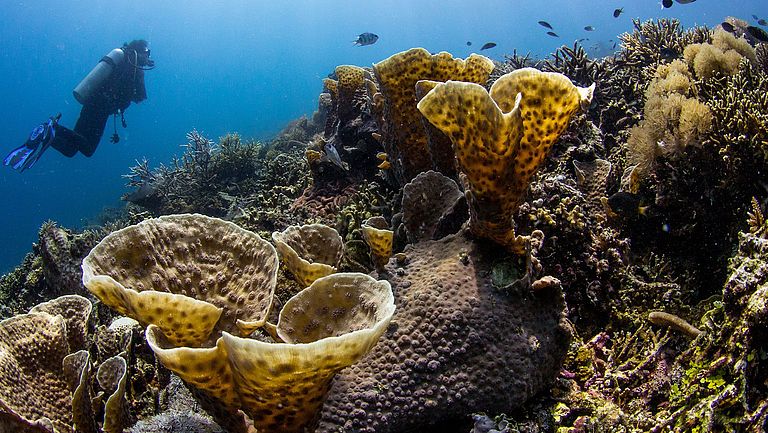
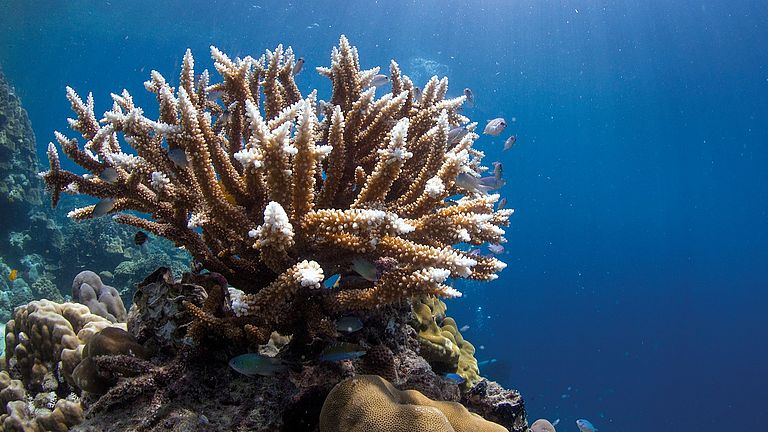
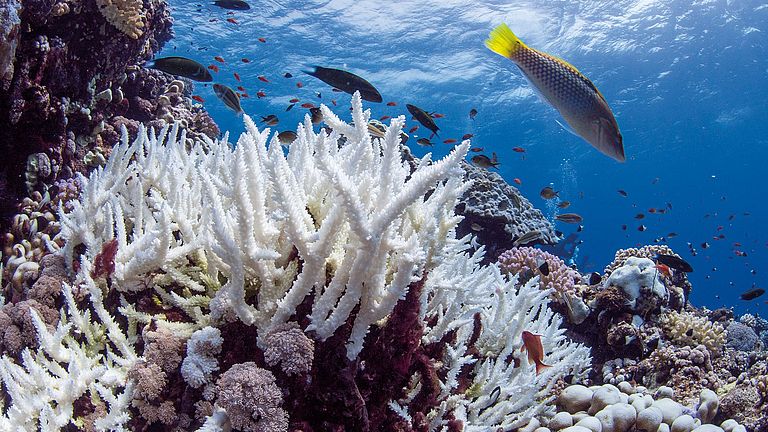
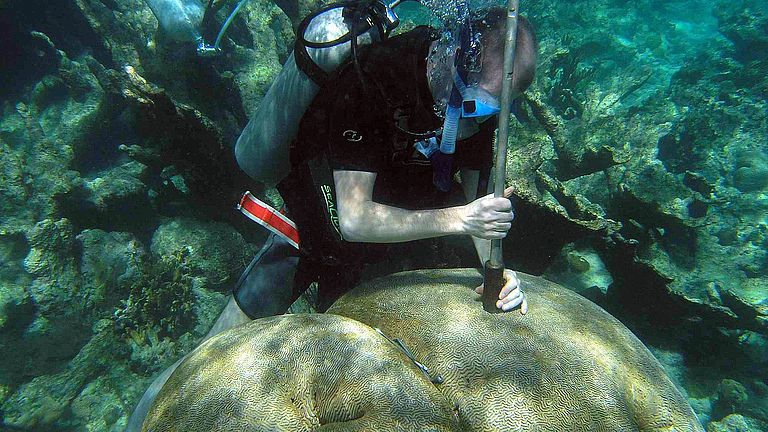
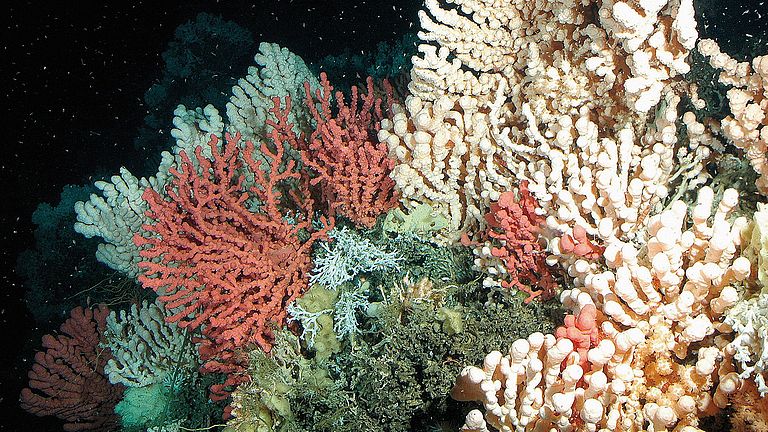
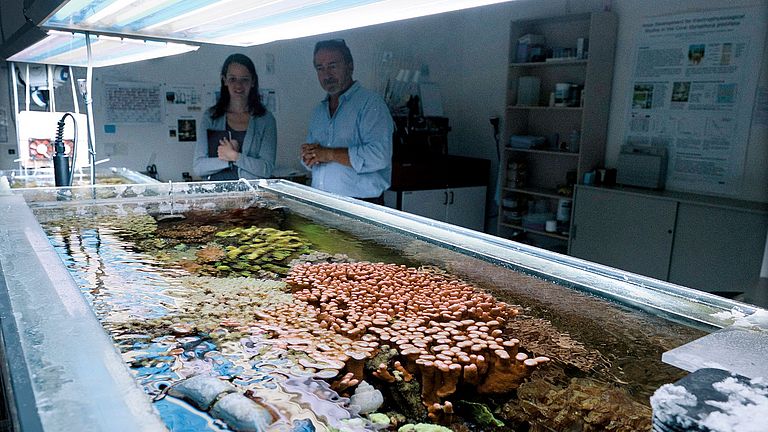
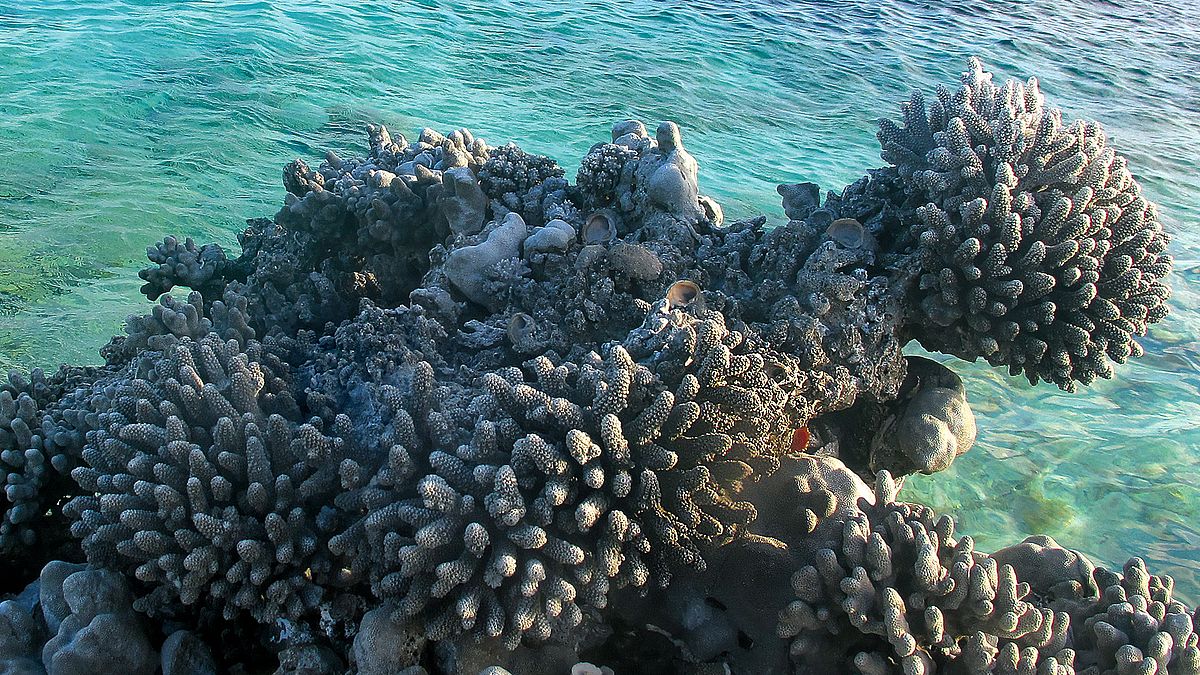

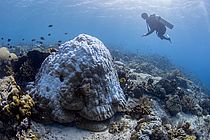
![[Translate to English:] Korallenriffe vor der Küste der mexikanischen Halbinsel Yucatan in der Nähe von Grundwasserquellen (Ojos). Foto: Elizabeth D. Crook [Translate to English:] Korallenriffe vor der Küste der mexikanischen Halbinsel Yucatan in der Nähe von Grundwasserquellen (Ojos). Foto: Elizabeth D. Crook](/fileadmin/_processed_/5/8/csm_2009-06-20_Riffe_Ojos_Elizabeth_D._Crook_909a0e02ec.jpg)
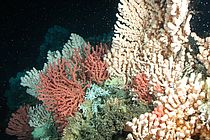
![[Translate to English:] Hirnkoralle Diploria strigosa. Derartige Korallen wurden für die aktuelle Studie untersucht. Foto: Steffen Hetzinger, GEOMAR [Translate to English:] Hirnkoralle Diploria strigosa. Derartige Korallen wurden für die aktuelle Studie untersucht. Foto: Steffen Hetzinger, GEOMAR](/fileadmin/_processed_/1/c/csm_2015-07-15_Diploria__strigosa_SHetzinger-GEOMAR_81eeeb541b.jpg)
